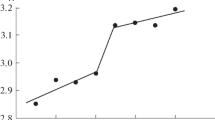Abstract
Certain processing-related flaws in cold isostatically pressed ceramic powder compacts may arise from the delayed burn-out of organic binders until the sintering temperature is approached, although the isostatic compaction technique usually gives a higher and much more uniform green density than the conventional die compaction technique. For the 3 mol% Y2O3-doped zirconia powder in which 3 wt% PEG 1500 was introduced, the sintered density and sintering shrinkage were found to decrease in a near linear manner with increasing isostatic compaction pressure. The processing-related defects were identified as intergranular pores (1–5 μm). It is considered that these processing-related defects are a consequence of incomplete organic burn-out at low and intermediate temperatures in the heating-up period and the swelling of intergranular pores associated with the burn-out of residual organic binders at temperatures close to the sintering temperature. A higher calcination temperature and an extended calcination dwell time may be required to eliminate the organic residuals in the isostatically pressed ceramic powder compacts than in the conventional die-pressed samples.
Similar content being viewed by others
References
F. F. Lange,J. Amer. Ceram. Soc. 72 (1989) 3.
R. W. Rice, in “Treatise on Materials Science and Technology”, Vol. 11, edited by R. K. MacCrone (Academic Press, New York, 1977)p. 199.
J van der Zwan andC. A. M. Siskens,Sci. Ceram. 11 (1980) 159.
A. G. Pincus andL. E. Shipley,Ceram. Ind. 92 (1969) 106.
F. F. Lange, B. I. Davis andE. Wright,J. Amer. Ceram. Soc. 69 (1986) 66.
J. S. Reed andR. B. Bunk, in “Treatise on Materials Science and Technology”, Vol. 9, edited by F. F. Y. Wang (Academic Press, New York, 1976) p. 71.
O. J. Whittemore Jr, in “Ceramic Processing before Firing”, edited by G. Y. Onoda Jr and L. L. Hench (Wiley, New York, 1978) p. 343.
G. F. Austin andG. D. McTaggart, in “Treatise on Materials Science and Technology”, Vol. 9, edited by F. F. Y. Wang (Academic Press, New York, 1976) p. 135.
W. D. Kingery, “Ceramic Fabrication Processes” (MIT Press, Cambridge, MA, 1963).
A. C. Knaapen andG. A. van Broese,Sci. Ceram. 10 (1978) 93.
D. W. Richerson, “Modem Ceramic Engineering” (Marcel Dekker, New York, 1982).
E. Carlstrom, M. Stjostedt, B. Mattsson andL. Hermansson,Sci. Ceram. 14 (1988) 199.
Author information
Authors and Affiliations
Rights and permissions
About this article
Cite this article
Wang, J., Li, S.H.P. & Stevens, R. Effects of organic binders on the sintering of isostatically compacted zirconia powders. J Mater Sci 27, 63–67 (1992). https://doi.org/10.1007/BF02403644
Received:
Accepted:
Issue Date:
DOI: https://doi.org/10.1007/BF02403644




